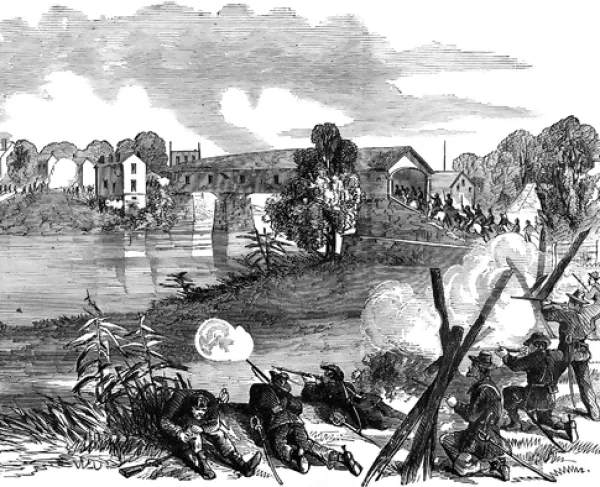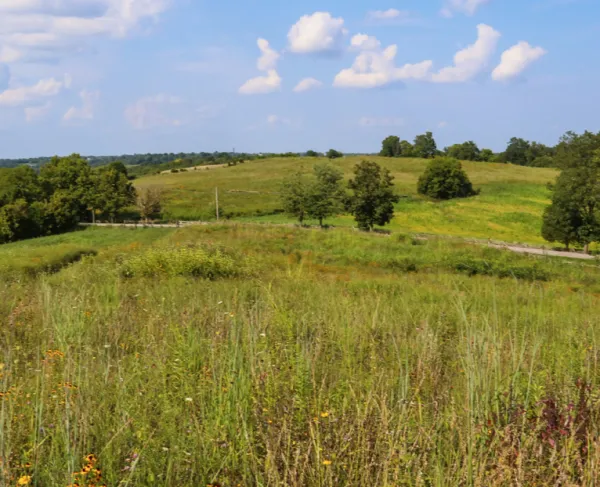Book: The Civil War at Perryville
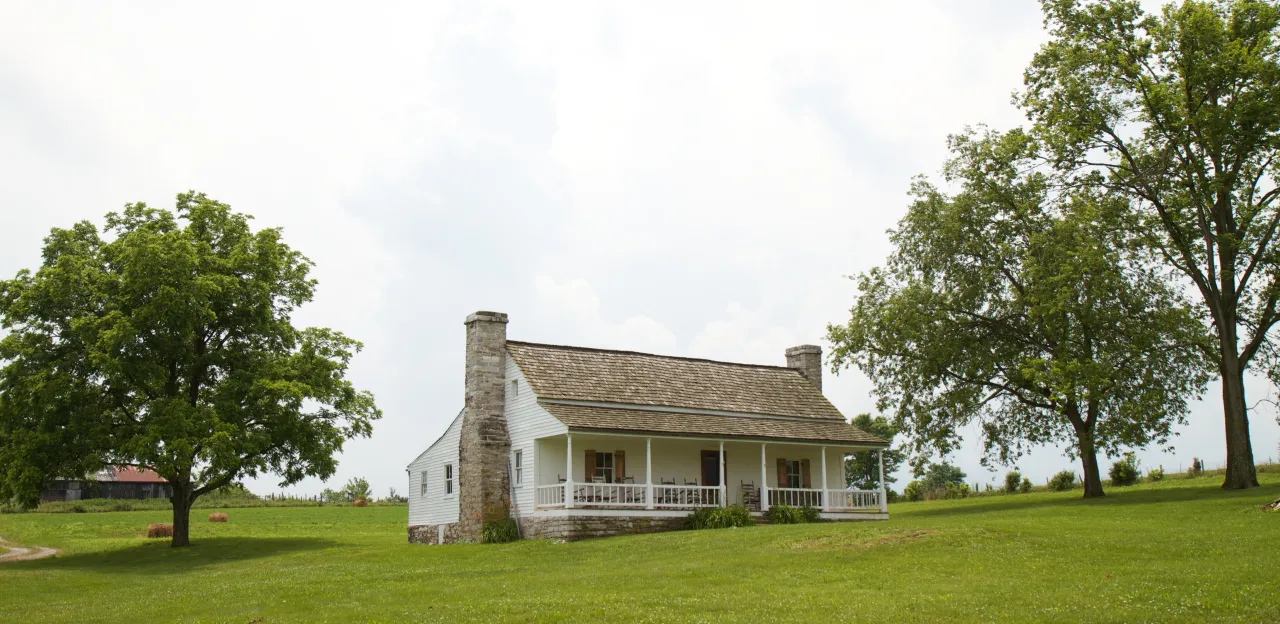
As we marked the 149th anniversary of the Battle of Perryville, the Civil War Trust had a chance to sit down with Civil War historian and preservationist Christopher Kolakowski, the past executive director of the Perryville Enhancement Project and current director of the General George Patton Museum. He is the author of “The Civil War at Perryville: Battling For the Bluegrass” and “The Stones River and Tullahoma Campaigns: This Army Does Not Retreat,” new this month from The History Press.
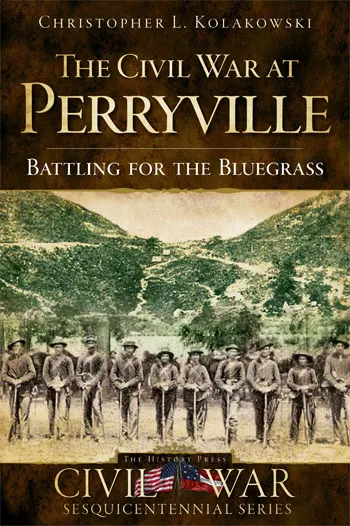
Civil War Trust: It has been recorded that Lincoln stated in a private letter that for the Union to lose Kentucky would be to lose “nearly the entire game.” How do you think the outcome of Perryville affected the outcome of the Civil War?
Chris Kolakowski: Lincoln said that in a letter in September 1861, and he was correct. Kentucky’s geography and resources conveyed immense advantages to whichever side controlled the state. Let’s not forget that as a logistical corridor, the Ohio River was as important to the North as the Mississippi River was to the South. Kentucky has the longest shoreline on the Ohio, which meant that whoever controlled the Bluegrass State also controlled the river. Kentucky was also a good source of men, supplies and horseflesh to whichever side controlled it. The state itself was deeply split, with two governments in 1861, each voting to join the contending sides. The following year the Confederates came close to turning Kentucky their way when they invaded in August and September 1862. Perryville ended that effort, which also turned out to be the last serious Confederate incursion into the state (except for cavalry raids). Without Kentucky, the North could not have won the Civil War, and Perryville kept Kentucky under Union control.
How would you describe the state of Perryville Battlefield today? How does it compare with its state on October 8, 1862?
CK: Ed Bearss once called Perryville and Shiloh the two best-preserved Civil War battlefields in the country, and I agree. When you are on the Perryville Battlefield today, you are in 1862. It is a real preservation success story, and shows what can happen when you get local, state and national partners all working together to save land. Since the creation of that partnership (the Perryville Enhancement Project) in 1992, the park has grown by leaps and bounds – from a 98-acre day park into an 800+-acre battlefield that is nationally recognized. The park staff has done a great job trying to get the site back to its wartime appearance, and you get a real flavor of what it looked like at the time. Perryville has also benefited by being 40-50 miles away from the nearest interstate and major metro area – it has not had to face quite the same severe growth pressures as many battlefields in Virginia or Tennessee.
When visiting Perryville Battlefield today, what would a visitor be able see and do? What other battlefields would you recommend for visits?
CK: Perryville is a great hiking battlefield, with more than seven miles of trails. I recommend starting your visit at the park museum, which was recently redone with new exhibits and a lot of great battle-related artifacts. There’s also a nice driving tour that highlights both sites on the Perryville Battlefield State Historic Site and in Perryville itself. The City of Perryville is two miles from the park, and has one of the most complete mid-19th century streetscapes left in the United States. It was also the site of the first major street fighting of the Civil War.
As for other favorite Civil War places to visit, naturally Perryville, Stones River, and Tullahoma are near the top of my list. Antietam is a great story and a wonderfully-preserved site. I also like the Bloody Angle at Spotsylvania Court House – its haunting peace today contrasts with the horror of May 12–13, 1864. I am really impressed with what has been done to preserve and interpret the Seven Days Battles, especially Glendale and Malvern Hill. The last time I was in Richmond I made a point of visiting the Lee-McClellan sites to track all the great stuff going on there.
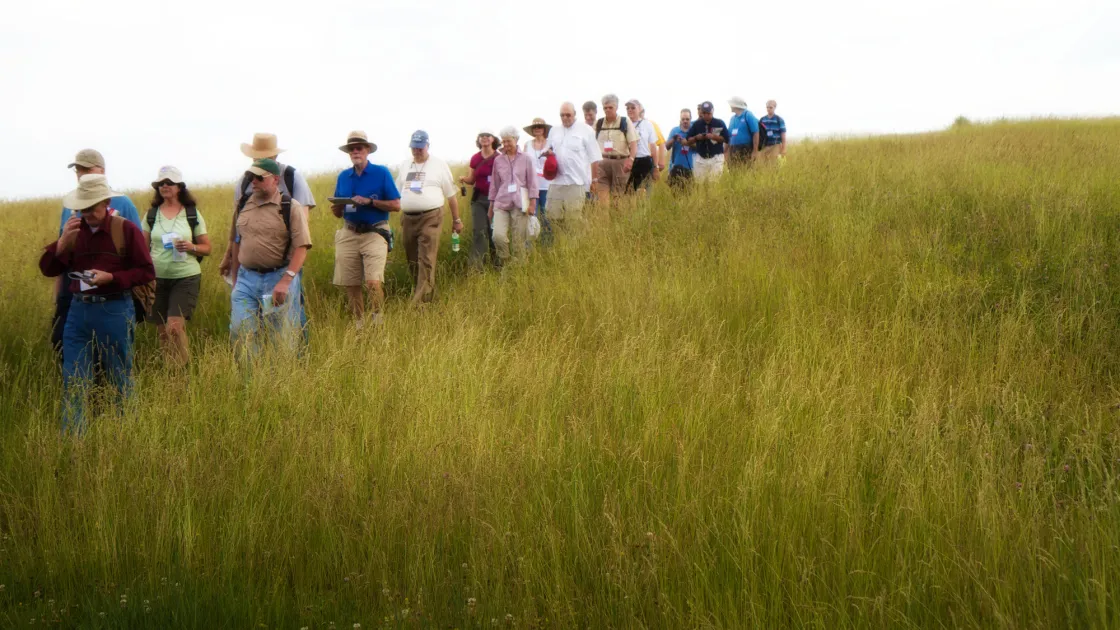
How has the Perryville Battlefield changed since when you first visited or when you arrived for your work there?
CK: I first visited the battlefield in August 2005 as part of the staff of a Civil War Trust Teacher Institute. Two months later, I was asked to become the executive director of the Perryville Enhancement Project, a position I held from November 2005 to October 2008. When I got there, the park was 575 acres, and hadn’t added land since 2002. It was also split into three sections due to inholdings. Working with our Kentucky partners and the Civil War Trust, we added 152 acres and set the groundwork for more, united the park into one whole, remade the museum, hosted a National Civil War Reenactment and increased Perryville’s national profile. I am very proud of what we all accomplished in those three years, and Perryville will always be a special place for me.
Looking forward, what would you like to see happen at the Perryville Battlefield?
CK: Today we are only about five or six parcels away from achieving the critical mass of battlefield land that we need there. I’d like to see those tracts acquired, plus more interpretation and expansion of the hiking and driving trails on the existing state-owned land. Mostly, I’d like more people to get out there and appreciate the site and its story for the significant and beautiful place that it is.
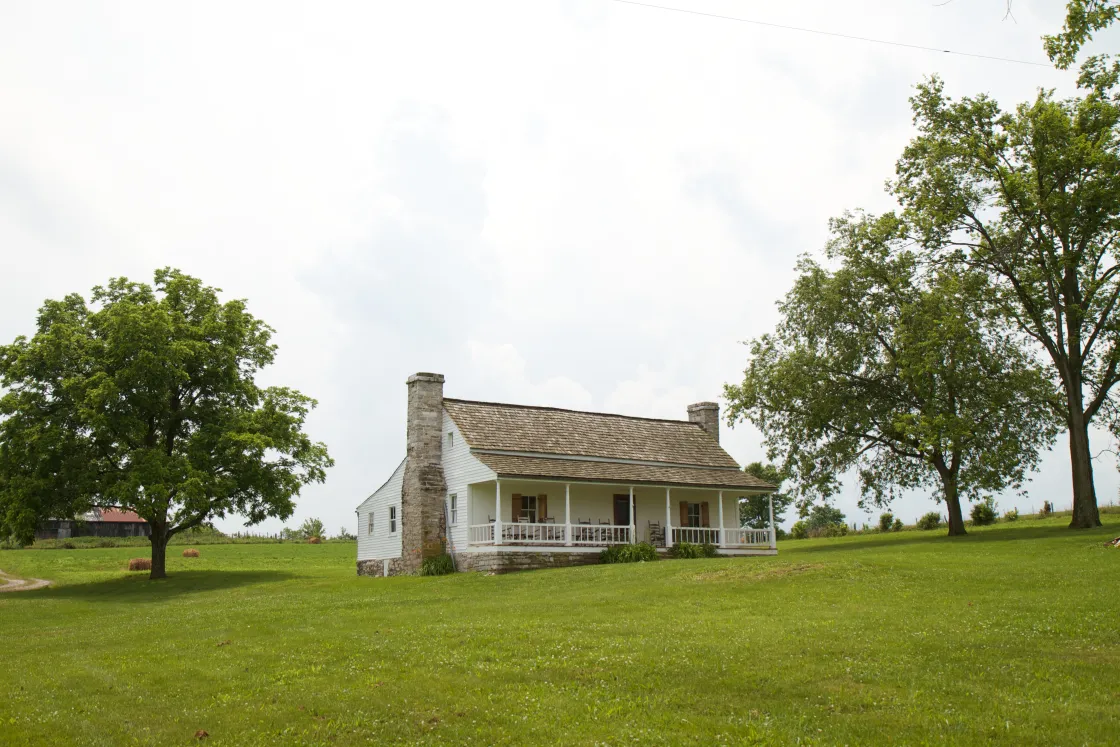
In your career, you’ve been deeply involved with the preservation of tangible parts of American history, whether they are battlefields or museum collections. Why do you think such physical reminders are so important?
CK: The real objects and places have power – the power of authenticity, which forges a connection. Standing in front of the real Mona Lisa is different from seeing a print. We have General Patton’s pistols on display at the Patton Museum, and they convey a power that the reproductions (like the prop pistols used in the movie Patton, also in our collection) do not. History was made using these items and (in the case of Civil War battlefields) these places. Without the authentic items or places, history’s connective power is diminished or extinguished. Once lost, that power of authenticity cannot be recreated. I think this power is one reason so many people travel to Civil War sites each year, to try and capture that tangible connection to America’s defining conflict that only being in the presence of an object or place can give.
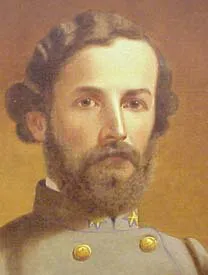
From the Civil War to George Patton, you’ve got very broad historical passions. Are there any common threads running between the topics that interest you the most?
CK: I am a student of military history, and my career and interests have spanned everything from 1775 to the present. Most of my writing has focused on the Civil War, but I have worked in other areas too. The biggest common thread is that war is deeply human story – we should never forget that these are people who fought, not simply black-and-white pictures or notations on a map. We live in a country that regularly supplies brave and capable people to serve and defend this nation in time of need. Their stories need to be preserved for future generations to appreciate and study.
Another major thread is the immediacy of the Civil War, especially to many people in the 20th Century. Douglas MacArthur was the son of a decorated Union officer. George Patton learned to ride and use a sword with the same saddle and saber his grandfather was using when he was mortally wounded at the Third Battle of Winchester in 1864. Jonathan Wainwright’s grandfather died in a sea battle off Texas in 1863. For these men, the Civil War was not ancient history, it was a formative part of their lives.
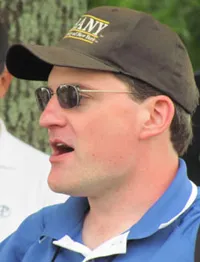
Are you working on any new Civil War-related books or projects?
CK: My latest book is The Stones River and Tullahoma Campaigns: This Army Does Not Retreat, comes out this month from The History Press. It is the sequel to my Perryville book and follows the two armies back into Tennessee, describing the first two duels between Rosecrans and Bragg. One of the subplots of the book is how the long shadow of the Kentucky Campaign lingered over the Army of Tennessee’s operations during this period. In 2012 the U.S. Army will publish my treatise on the Virginia 1862 campaigns (Valley, Peninsula/Seven Days, and Second Manassas) as part of their Sesquicentennial Campaign History series on the Civil War.
Christopher L. Kolakowski was born and raised in Fredericksburg, Va. He received his BA in History and Mass Communications from Emory & Henry College, and his MA in Public History from the State University of New York at Albany. Chris has spent his career interpreting and preserving American military history with the National Park Service, New York State government, the Rensselaer County (NY) Historical Society, the Civil War Trust, and the Army Reserve. From 2005-2008 Chris was Executive Director of the Perryville Enhancement Project; during his tenure he added 152 acres of critical battlefield land and increased Perryville's national profile. He has written and spoken on the Civil War, American Revolution, Napoleonic Wars, and both World Wars. In 2009 the History Press published his first book, "The Civil War at Perryville: Battling For the Bluegrass", and, in 2011, its sequel "The Stones River and Tullahoma Campaigns: This Army Does Not Retreat." Kolakowski currently serves as Director of the General George Patton Museum in Fort Knox, Ky. In 2012 the U.S. Army will publish his volume on the 1862 Virginia Campaigns as part of its sesquicentennial series on the Civil War.
